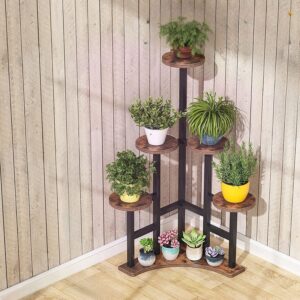The Ultimate DIY Guide: How to Build Your Own Multi-Tiered Planter Stand Leave a comment
Creating a multi-tiered planter stand is a rewarding DIY project that can enhance your garden or indoor space with a touch of personalized flair. Whether you’re looking to elevate your indoor plants, beautify your balcony, or organize your living room greenery, building your own multi-tiered planter stand allows you to customize the design to fit your specific needs and style. This comprehensive guide will walk you through the steps to build a stunning, functional multi-tiered planter stand using various materials.
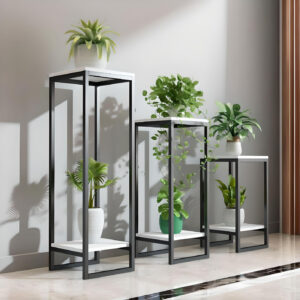
1. Planning Your Multi-Tiered Planter Stand
Before diving into the construction process, it’s essential to plan your design. Consider the following aspects:
Design and Size: Decide on the number of tiers and the dimensions of each tier based on your space and plant needs. Sketch out your design to visualize the final product.
Material Selection: Choose materials based on where the stand will be used:
- Wooden Planter Stands: Ideal for a rustic or traditional look. Wood can be easily customized with paint or stain.
- Metal Planter Stands: Perfect for a modern, sleek appearance and durability. Metal stands are well-suited for both indoor and outdoor use.
Location: Determine where your planter stand will be placed—indoors, on a balcony, or in a living room—to select the appropriate materials and design.
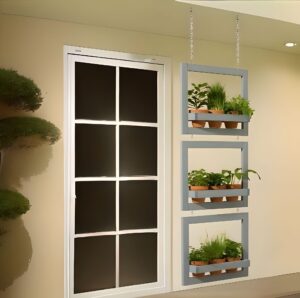
2. Gathering Materials and Tools
Once you have a design, gather the necessary materials and tools:
- Materials: For a wooden stand, you’ll need lumber (such as cedar or pine), screws, wood glue, and a wood finish. For a metal stand, you’ll require metal rods or sheets, welding tools, and paint.
- Tools: Common tools include a saw (for wood), drill, screwdriver, measuring tape, level, and sandpaper. For metal stands, you might need a welding machine or metal cutting tools.
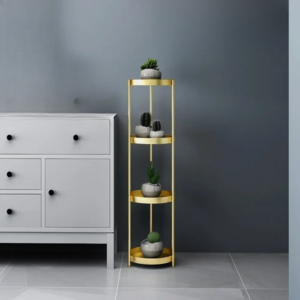
3. Building the Planter Stand
Step 1: Measure and Cut
For wooden stands, measure and cut the wood according to your design. Ensure all pieces are cut to the correct size for stability and aesthetics. For metal stands, cut metal pieces to the desired lengths and shapes.
Step 2: Assemble the Base
Start by assembling the base of the stand. For wooden stands, this involves attaching the base supports to the vertical posts. For metal stands, weld or secure the base components to create a sturdy foundation.
Step 3: Attach the Tiers
Attach the tiers to the base, ensuring they are level and securely fastened. For wooden stands, use wood glue and screws to secure each tier. For metal stands, weld or bolt the tiers into place.
Step 4: Finish the Stand
Sand any rough edges on wooden stands and apply a finish or paint to protect the wood and enhance its appearance. For metal stands, apply a rust-resistant primer and paint to protect against the elements.
Step 5: Add Drainage
Ensure each tier has drainage holes or use pots with drainage to prevent water accumulation and root rot.
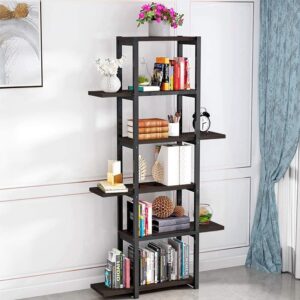
4. Styling and Placement
Indoor Planter Stands: For a planter stand indoor, choose plants that thrive in indoor conditions, such as ferns, succulents, or herbs. Arrange the tiers to create a visually appealing display.
Outdoor Planter Stands: For planter stand outdoor, select weather-resistant plants and materials. Place your stand in a sunny spot if your plants need ample light.
Balcony and Living Room: If your stand is for a planter stand for balcony or planter stand for living room, ensure it complements your existing decor and fits well within the available space.
Customization: Add decorative elements, such as plant pots with unique designs or LED lights, to enhance the look of your multi-tiered stand.
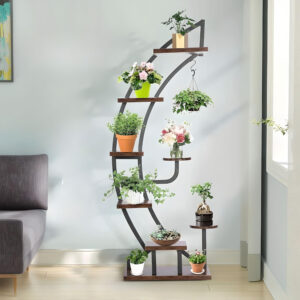
5. Maintenance and Care
Wooden Planter Stands: Regularly check for signs of wear or damage. Reapply wood finish or sealant as needed to maintain durability.
Metal Planter Stands: Inspect for rust or corrosion and touch up with paint to ensure longevity. Clean regularly to keep it looking its best.
Overall Care: Ensure your plants are healthy by checking watering needs and adjusting the stand’s location based on light requirements.

Conclusion
Building your own multi-tiered planter stand is a fulfilling DIY project that allows you to create a personalized piece of garden decor. Whether you opt for a planter stand wooden or planter stand metal, the steps outlined in this guide will help you craft a functional and stylish stand for your plants. By carefully planning, assembling, and customizing your planter stand, you can enhance your indoor or outdoor space with a beautiful and practical addition.
For those searching for inspiration or resources, look for planter stands near me or explore online retailers for ideas and materials. Happy gardening and building!
